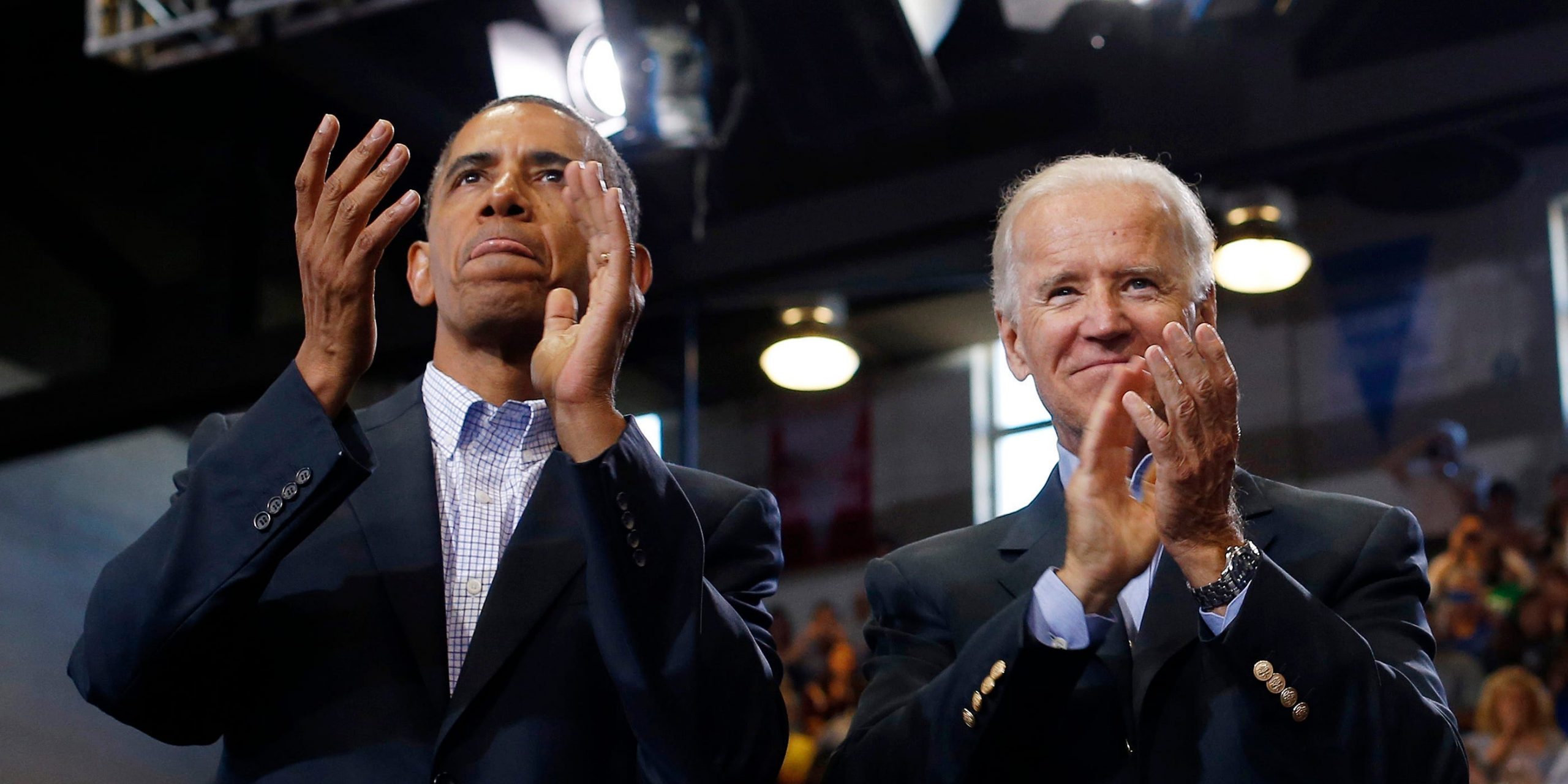
REUTERS/Jason Reed
- The size of Biden's stimulus plans has surprised some who worked in the Obama administration.
- Obama faced debt fears from both Democrats and Republicans when passing aid during the Great Recession.
- Biden has already passed a massive stimulus package and he's preparing an even bigger infrastructure bill.
- See more stories on Insider's business page.
The Biden administration has had a much easier go of passing massive stimulus – and it's much bigger in its size and scope. Obama-era staffers have taken notice.
Both Democratic presidents entered office having to tackle an economic recession head-on. For some, the $1.9 trillion package passed earlier in March represented a chance to learn from 2009, when a stimulus less than half as large – though a record at the time – led to a slow recovery over the subsequent decade.
In the early 2010s, lawmakers concerned about the size of the national debt quickly shifted focus from providing fiscal support to tightening the government's wallet. The pivot left states with huge holes in their budgets and an inability to rehire public workers, which proved a significant drag on the economic rebound. It took years for a still-elevated unemployment rate to reach pre-crisis lows.
The rebound from the Great Recession "exacerbated inequality and other forms of economic scarring," Claudia Sahm, a former Federal Reserve economist and an economist at President Obama's Council of Economic Advisors, told Insider. Policymakers and Americans remember the mistakes of 2009 all too well, she added.
Powerful Democrats were vocal in their desire to take a different route with Biden's stimulus. Senate Majority Leader Chuck Schumer told CNN in March that the shift to austerity was a "big mistake" that had serious consequences. And Treasury Secretary Janet Yellen warned during her confirmation hearing that a lack of sufficient support risks "a longer, more painful recession now and long-term scarring of the economy later."
Other former Obama staffers see a radically different approach this time around.
One is Heidi Shierholz, who served as chief economist to Obama's secretary of Labor. "If my 2010 self could see just how different we're handling this recovery than we handled that one - when we were just pulling our hair out, because Congress was turning towards austerity when the unemployment rate was literally over 9% - it was just an outrageous approach to the recovery at that time."
Shierholz, who is now director of policy at the left-leaning Economic Policy Institute, noted that decade saw an "incredibly weak and slow" economic recovery, which she attributed to Congress not providing the kind of fiscal relief that would have boosted aggregate demand to get the economy going, "and we are not making that mistake this time."
"And so this is just incredibly different," she said.
"If someone had said to me in 2009, 'Hey, we're going to do this $1.9 trillion bill,' I would have said, 'Whoa,' " Sen. Robert P. Casey Jr. of Pennsylvania told The Washington Post on Sunday.
Getting Democrats to back Obama's recovery plan was a challenge in itself, Jason Furman, professor of economics at Harvard University and chair of Obama's Council of Economic Advisors, told Insider.
Congressional Democrats had initially pitched a $300 billion aid plan to the White House, less than half the size of the eventual $871 billion package. Some in the administration and outside experts like Nobel laureate Paul Krugman even advocated at the time for a $1 trillion measure, but that idea was nixed on fears that Republicans would balk at the cost.
Biden also benefits from Americans being more familiar with colossal relief plans, Furman said. Obama's aid package broke barriers for fiscal support, and the $2.2 trillion CARES Act co-designed by House Democrats and signed by President Donald Trump at the start of the pandemic remains the largest relief plan in US history. Americans now have a higher tolerance for price tags that, just decades ago, were all but unthinkable, Furman said.
The other lesson Biden seems to have learned from the Obama era is not to stop now. The president is set to give a speech on his economic vision for the US tomorrow in Pittsburgh and unveil the first part of an infrastructure package reportedly costing up to $4 trillion. As the Biden era unfolds, he's just going bigger.
The nascent economic reopening could yet hinder Biden's ambitious plans. The president on Monday announced that 90% of Americans will be eligible for the coronavirus vaccine by April 19, teeing up a strong economic recovery in the summer. "It will become increasingly clear the economy is improving very rapidly," Furman said, and so the case for more massive federal spending could weaken as a result.
Still, Sahm said that doesn't make additional aid any less relevant: "Another $3 trillion will not get us to the finish line."
Biden's current and future stimulus plans will build momentum for a series of legislation and executive actions "most similar to what we saw in the New Deal or the Great Society," the former Fed economist said. "Of course, the effectiveness of the early packages will be decisive in how much more President Biden can accomplish."
The White House and former President Obama did not respond to requests for comment.